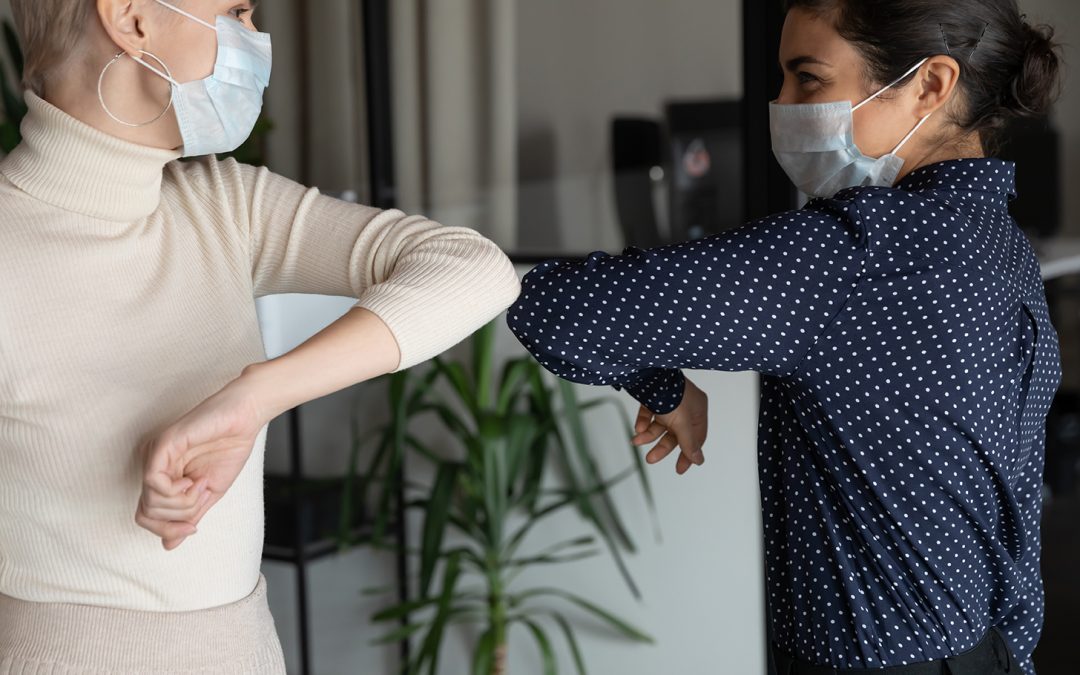Facial expressions comprise 80% of our verbal and non-verbal communication, but we find ourselves with face coverings or masks in the coronavirus era, making it nearly impossible to rely merely on it. Our eyes and mouth are the most expressive parts of our face and not being able to tell if someone is smiling or read someone’s expression, makes it challenging to effectively communicate. In addition, masks also tend to muffle your voice sometimes even making it harder to speak. To make matters worse, with social distancing we cannot complement our verbal communication with touch.
For someone like me, who relies heavily on touch to connect, empathize, reassure, and communicate with others, it has been challenging to find new ways of expressing my emotions. Not being able to hug someone in pain, greet someone you love, or show sincerity through touch or a smile in a difficult conversation puts much more pressure on finding the right words for every occasion. No longer can someone light up the room with their smile or read someone’s lips or scan their audience with masks on!
So what can we do to ensure we continue to communicate effectively? Here are some tips on how to “over-communicate” to make up.
- Face the individual you are speaking to directly so there is no ambiguity about who you are addressing in the room.
- Address the individual by their name or appropriate titles to get their attention.
- Shakespeare said “the eyes are the windows to the soul” and given that your eyes are the most conspicuous part of the face with a mask on, making direct eye contact is critical. Let your eyes emphasize your message and learn to read other people’s reactions in their eyes.
- Many of us underestimate the role of eyebrows in accentuating facial communication. Happiness, sadness, fear, surprise and anger can all be portrayed with your eyebrows. A frown or a smile can be detected from the position of the eyebrows so take advantage of those brows!
- Speak up or adjust your volume based on social distancing and the environment. You don’t want to appear to be yelling at someone but at the same time if the person has a hearing disability or depends on lip-reading more than others, you want them to be able to understand you.
- Use inflection and tone to amplify the message, even if you normally don’t. A monotone can sound much worse through a mask. Practice modulating your voice to emphasize and clarify your message.
- If you are not used to speaking with your hands, now is a good time to learn gestures. There are a lot of gestures that enhance communication while others that can be misunderstood especially when most of your face is covered. For instance, if your arms are crossed across your chest but you’re smiling behind your mask, you may still not look very welcoming to someone. So be cognizant of your body language. Posture and movements are an integral part of body language. Get eloquent in using your body as visual aids to supplement your words.
I have noticed some people shying away from social contact even avoiding eye contact in public places just because they are finding it hard to adapt to the new “normal.” In fact, the need to communicate more is now. With is so much uncertainty and stress going around, we need to be able to express ourselves and understand others even better. A nod or raised eyebrows can replace a smile to greet someone and a virtual hi-five to a team member instead of a hug or handshake still gets them pumped up. So get creative with your strategies to help you message through your mask.

